UC scientists release a natural enemy of Asian citrus psyllid
Tamarixia radiata – tiny, stingless parasitic wasps that lay eggs in Asian citrus psyllid nymphs – were released in a citrus grove behind the residence of UC Riverside Chancellor Tim White. Over the next several years, UC Riverside and California Department of Food and Agriculture scientists will raise thousands of Tamarixia for release throughout California. The Tamarixia larvae will eat the ACP nymphs, killing them, and emerge as adults about 12 days later. Adult female Tamarixia also eat other ACP nymphs, killing many this way as well.
On Dec. 7, 2011, state and federal authorities cleared Tamarixia from quarantine with the issuance of a permit to release this natural enemy for establishment in California. The parasitic wasps can’t bite or sting people or animals. Safety testing in quarantine has demonstrated that the parasites are disease free and pose no environmental risk.
The Indian subcontinent is likely part of the native range for Asian citrus psyllid, Hoddle said. The first study of the pest was published in 1927 by scientists in the region. Asian citrus psyllid is now found in parts of the Middle East, South and Central America, Mexico and the Caribbean. In the United States, this psyllid was first detected in Florida in 1998 and is now also found in Louisiana, Georgia, South Carolina, Texas and Arizona. In 2008, the pest was detected for the first time in California in San Diego and Imperial county backyard trees. Large populations of Asian citrus psyllid are now well established in urban areas of Los Angeles, San Bernardino and Riverside counties.
When Asian citrus psyllids feed on citrus leaves and stems, they damage the tree by injecting a toxin that causes leaves to twist and die. More important, however, is the psyllid’s ability to spread a bacterium that causes Huanglongbing disease. Huanglongbing, also known as citrus greening, is one of the most harmful diseases of citrus worldwide. The leaves on infected trees turn yellow, the fruit becomes bitter and eventually the tree dies. There is no known cure for citrus, and this plant disease is not a risk to people.
Huanglongbing has made its way to Mexico and Florida, but so far it has not been detected in California. Currently, the citrus industry is dependent on insecticide sprays to control ACP and prevent the introduction of Huanglongbing. UC Cooperative Extension citrus entomology specialist Beth Grafton-Cardwell, director of the UC Lindcove Research and Extension Center, welcomes the promise of biological control with introduced natural enemies.
“This is very good news for the integrated management of Asian citrus psyllid and a highly significant contribution of the University of California,” Grafton-Cardwell said. “Parasitoid releases will add a new and exciting component to the management program for ACP, especially for the many homeowners who have citrus trees in their yards.”
Hoddle said Tamarixia won’t eradicate Asian citrus psyllid, but scientists predict it will reduce the densities of the pest, giving other control practices a better chance of working. Commercial citrus producers in California will still need to apply insecticides to control Asian citrus psyllid and prevent the spread of Huanglongbing, should it be found in the state. However, the frequency of these applications may be reduced because Tamarixia is killing ACP nymphs in areas that are not sprayed.
Hoddle collected the parasites in collaboration with scientists in the Department of Agri-Entomology at the University of Agriculture in Faisalabad (UAF), Pakistan. UAF was an ideal base for the project, Hoddle said, because it had citrus research plots infested with Asian citrus psyllid that have not been treated with insecticides. The university is also situated near local commercial citrus production, the area has a climate similar to citrus-growing regions of California, and the university’s vice chancellor, Iqrar Khan, is a UC Riverside graduate who also has an active research program on Huanglongbing in Pakistan.
In March and April 2011, Hoddle spent four weeks at UAF to set up research plots in kinnow and sweet orange trees. Coincidentally, kinnow is a mandarin that was bred at UC Riverside in 1935 and accounts for 85 percent of citrus produced in the Punjab. Hoddle and his Pakistani colleagues collected 24 male and 56 female Tamarixia radiata, which were brought back to UC Riverside to establish colonies.
Hoddle returned from a June 2011 trip to Pakistan with 151 male and 255 female Tamarixia radiata. An October and November 2011 visit netted another 800 parasitic wasps.
“Gathering insects from citrus plants in the Punjab generated an immense amount of curiosity,” Hoddle said. “Kids in particular were super-curious about what we were doing, where we had come from and why we had come to Pakistan. The people in the Punjab were incredibly courteous, polite and generous.”
Hoddle has trained a Pakistani graduate student Shouket Zaman Khan at UAF to monitor the interaction of Asian citrus psyllid with its natural enemies in their native environment. The researchers will determine whether other natural enemies of the pest could provide additional biological control of California ACP in the future.
Funding for the Asian citrus psyllid biocontrol effort has been provided by the California Department of Agriculture Food and Agriculture Specialty Crops Program, the USDA Citrus Health Response Program, the Citrus Research Board, and the UC Hansen Trust.
| Click here for high resolution. | Click here for high resolution. |
MEDIA CONTACT: Mark Hoddle, UC Cooperative Extension biological control specialist based at UC Riverside, (951) 827-4714, mark.hoddle@ucr.edu
Comments:
Is this wasp, that goes after the Psyllid, also a predator of the Leaf Miner? That would be great if we could go after two nuisances with one wasp.
We continue to have leaf miners munching on our citrus, but have had success in knocking them back for quite a while by applying a couple sprays of Spinosad.
Unfortunately the neighbors and whatever other trees outside of our control continue to provide new bugs to reinfest our trees.

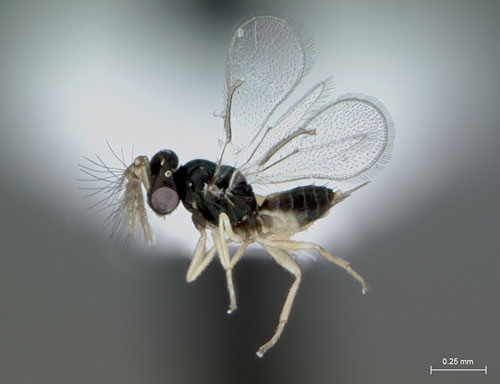
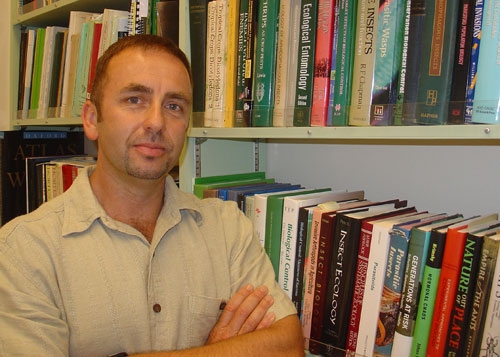
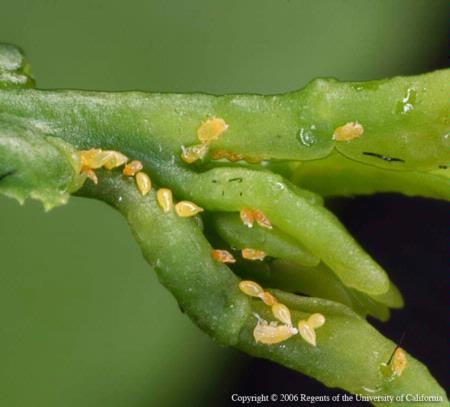
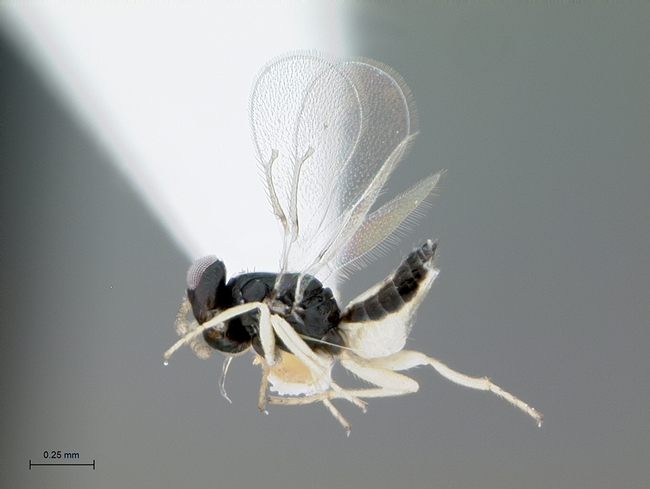
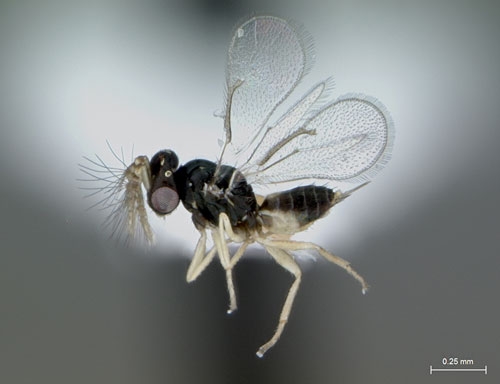
Although I pretty much stick to what yard-gardeners can do to improve their prospects of attracting the creatures, I do spend a bit of time on UC efforts in the bio pest control field.
Tomorrow, I'll include an overview of your article, and the web-address of where to find it. Thank you for your contribution to this important and fascinating field of study. Michael L. Freitas, Outreach Coordinator
Posted by Michael L. Freitas on June 29, 2012 at 4:18 PM